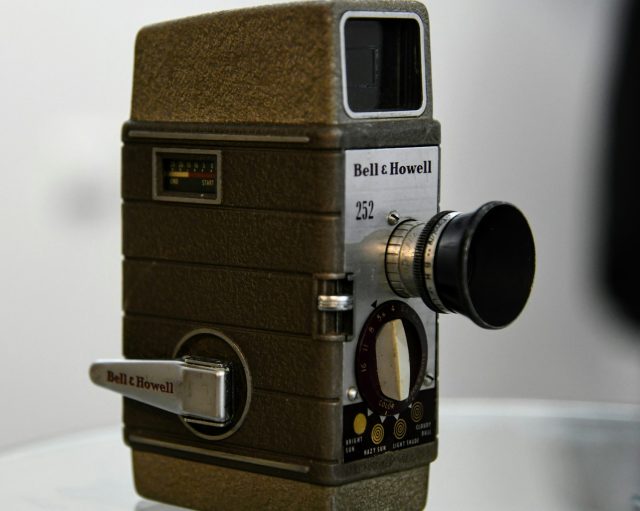
Even in today’s world of advanced technology and vibrant color films, filmmakers still return to black and white, knowing it carries a unique weight. It’s not just nostalgia that draws them in, but the power of its simplicity—a method of storytelling that strips love down to its core, unencumbered by the distractions of color. The evolution of this genre, reflecting shifts in society, artistic expression, and technological advancements, reveals just how enduring and captivating it truly is.
Let’s learn about the history of black and white romance movies across time and continents.
The Golden Age: 1920s–1950s
During Hollywood’s Golden Age, black-and-white films were the norm, and romance was a central theme. Movies like Casablanca (1942), Roman Holiday (1953), and Brief Encounter (1945) captivated audiences with their poignant love stories. These films often featured star-crossed lovers, societal constraints, and moral dilemmas, set against the backdrop of war or social upheaval.
In Casablanca, the illicit love between Rick (Humphrey Bogart) and Ilsa (Ingrid Bergman) becomes more heart-wrenching against the turmoil of World War II, highlighting sacrifice and the personal cost of global conflict. Similarly, Roman Holiday tells the fleeting romance between a princess (Audrey Hepburn) and a reporter (Gregory Peck), constrained by the differences in their worlds. The absence of color was not a limitation, but rather a stylistic choice that helped the emotional depth of these films, using shadows and light to convey love and longing.
Cinematographers like Gregg Toland (Citizen Kane) and James Wong Howe (The Thin Man) pioneered the use of light and shadow in black-and-white films, creating a visual language that captured the complexities of their characters. Their use of lighting not only intensified the drama but also isolated characters from their surroundings, making the love stories feel more intimate and visceral.
Post-War and New Hollywood: 1960s–1970s
By the 1960s and 1970s, color films had become the industry standard. Yet, black-and-white films continued to emerge, with directors like François Truffaut (The 400 Blows) and Ingmar Bergman (Wild Strawberries) using it to explore love, identity, and existential angst.
In Wild Strawberries, Bergman’s black-and-white cinematography accentuates the isolation and internal struggles of a man nearing the end of his life. His memories of love and youthful innocence are presented in stark contrast to his present, emphasizing the emotional complexity of the character. Truffaut, too, used black-and-white in The 400 Blows, highlighting the raw, unrefined emotions of a troubled youth on the brink of adulthood.
In the U.S., the 1960s saw a more liberated approach to romance. Films like The Graduate (1967) and Midnight Cowboy (1969) challenged traditional notions of love and relationships. While these films were in color, they reflected the changing cultural landscape of the time, introducing more complex, conflicted portrayals of love.
Modern Interpretations: 1980s–Present
In recent decades, black-and-white romance films have become rare, but still impactful. Films such as The Elephant Man (1980), Schindler’s List (1993), and The Artist (2011) have used the monochrome medium to evoke nostalgia, emphasize emotional weight, or create a timeless aura.
The resurgence of black-and-white in films like The Artist—a silent film—served to evoke the spirit of early cinema, while Schindler’s List used it to emphasize the gravity of its historical narrative, while The Elephant Man employed the medium to emphasize the stark, unembellished tragedy of the protagonist’s life. These films demonstrate how black-and-white can still be a powerful, expressive choice—not just for nostalgia’s sake, but as a tool for deeper emotional resonance. The use of black-and-white in these films strips the visuals down to essentials, focusing on the moral struggles of their characters.
The Enduring Appeal
Despite the prevalence of color films, black-and-white romance cinema continues to captivate audiences. The monochrome palette strips away distractions, allowing the viewer to focus solely on the characters and their emotions. This simplicity allows for a deeper connection to the story, making themes of love, loss, and longing all the more poignant.
Moreover, the legacy of black-and-white romance films continues to live on in modern cinema. Contemporary filmmakers, including Woody Allen and Martin Scorsese, often cite classics like Casablanca and Roman Holiday as major influences on their work, drawing inspiration from storytelling techniques of these earlier films.
Contemporary Color: Emotional Resonance and Symbolism
While color has largely replaced black-and-white films, its use in contemporary romance movies is still crucial. Directors today often employ color palettes to evoke specific emotions. For example, La La Land (2016) uses bright colors to represent the dreams and aspirations of its characters, while Call Me by Your Name (2017) uses the warm tones of an Italian summer to convey the intensity and fleeting nature of first love.
The psychology of color in film shows that filmmakers use color to guide responses. Warm tones like reds and pinks often symbolize passion and love, while cooler tones convey introspection and emotional distance. Just as black-and-white filmmaking was a choice to shape mood and establish connection, contemporary color cinema uses the same techniques to bring out the subtleties of romance.
Conclusion
The evolution of black-and-white romance cinema mirrors broader changes in society, technology, and filmmaking. From the glamour of Hollywood’s Golden Age to the introspection of European art films, and the artistic choices of modern directors, these films have continually redefined how love is portrayed on screen. Their enduring appeal lies in their ability to convey complex emotions through a simple yet powerful visual style.
While black-and-white romance films are no longer the industry standard, their legacy continues to inspire filmmakers today. For those interested in exploring this rich history, platforms like UVOtv offer curated selections of these timeless films, providing access to classics that continue to resonate with audiences around the world.










